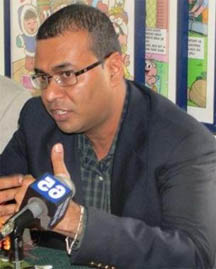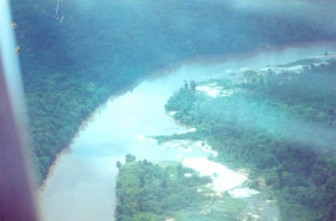The ban on mercury exports from the United States from January 1 this year is unlikely to have an impact on the country’s gold mining industry “for some time yet”. This according to Guyana Gold and Diamond Miners Association (GGDMA) Administrative Coordinator Colin Sparman.
While the Guyana Geology and Mines Commission (GGMC) has already announced that the industry is seeking alternatives to the use of mercury as an amalgam for gold in the country’s mining sector, Sparman told Stabroek Business he expects the use of mercury in the goldfields here “will be there for some time” and the ban on exports by the US is unlikely to affect supplies reaching miners here. “There are other sources from which mercury can be acquired with relative ease,” Sparman said.

While the issue as to whether international pressures for the cessation of the use of mercury in the gold mining sector has given rise to questions as to whether its use in the industry here may attract unfavourable international attention, the government, conscious of the importance of the role of gold in the economy and the consequential lobby of the mining community, has made it clear that it has no intention of banning the use of mercury.
The 27-nation European Community put in place a ban on mercury exports since September 2011.
Late last year Natural Resources Minister Robert Persaud specifically refuted reports that the government planned to ban the use of mercury this year despite a broader international ban on the use of the substance. Persaud was quoted as saying that despite its environmentally hazardous potential, mercury remained and essential element of the local gold industry.
While the government’s posture on mercury imports has created a considerable comfort zone for the mining sector, Sparman told Stabroek Business that the industry would expect the government to continue to lobby for a grace period for transitioning to alternatives to mercury in the sector, since gold mined in Guyana might still remain vulnerable to international market sanctions. The GGDMA’s concern over the likely vulnerability of Guyana’s gold exports is consistent with the view already expressed by the World Wildlife Fund – Guianas that the country’s export market might come under threat unless the industry hastens its pursuit of mercury-free production. While the WWF has also expressed the view that mercury-free exploitation of gold can be achieved without loss of production Sparman says that given miners’ familiarity with the use of mercury in the gold mining sector over many years the habit will be “hard to break”. Additionally, Sparman expressed the view that some of the smaller operations in the sector may be averse to methods of gold recovery that are technology intensive.

A robust official lobby to protect the country’s gold market has become all the more important for Guyana given the ‘rich pickings’ which the economy is securing from the sector including its spinoffs for employment and other sectors.
The increase in gold prices on the international market over the past six years has attracted hundreds of millions of dollars in both local and foreign investments in the sector. Investments have come mostly from Canada but Guyana’s goldfields have also attracted Brazilian, Russian, US and Australian investor interests.
Some Guyanese miners have been exposed to visits to French Guiana, funded by the World Wildlife Fund, where the use of mercury has been banned since 2006, to witness non-mercury mining techniques there. But sources in the GGMC have conceded that the miners do not appear to have taken the alternatives on board.
The local gold mining sector has been paying some level of interest in the Knelson Concentrator, which recovers gold without the use of mercury and which, according to industry reports, has a recovery rate of around 80 per cent








